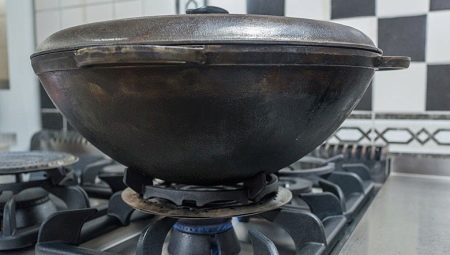In the modern world, people are paying more and more attention to the quality of food, the methods and technology of its preparation. The choice of dishes is huge, so experienced chefs know that the taste depends not only on the proper choice of products, but also on the choice of dishes themselves. One of the simple to prepare and in demand for taste properties are dishes prepared by stewing, as well as pilaf.
For cooking, a cauldron is used. A cauldron is a cast-iron boiler having a rounded shape with a round bottom, which has rather strong massive walls.
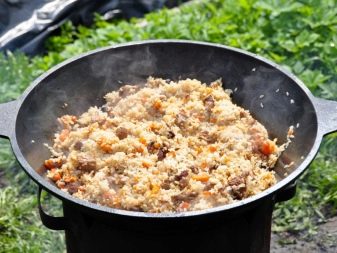
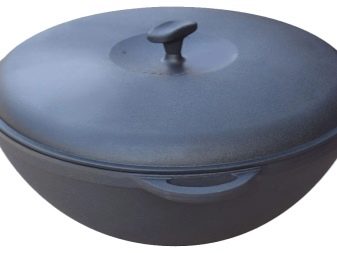
History
The population of Central Asia led a nomadic lifestyle in the past. Constant campaigns, conquests, exploration of new territories created a high need for catering. Plants were grown and harvested on acquired lands, and herds moving along with them were the source of meat. A cauldron was created for cooking, capable of cooking food for an impressive number of people. He became a symbol of unity and hospitality. Cauldrons did not require a special hearth because of their size, it was possible to cook on an ordinary fire, which was bred in the recesses. The fire heated the walls of the pits and made it possible to achieve a slow quenching process. The cauldron is installed both on the foci and by hanging on a special tripod, and special cooking stoves with chimneys are also being erected.
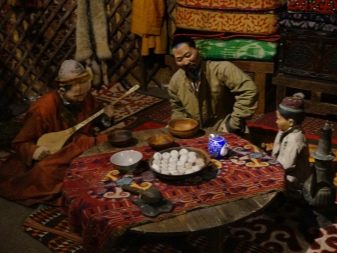
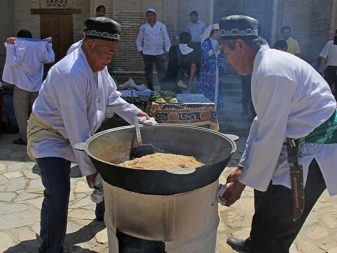
An interesting fact is the existence of the largest cauldron, which is located in the A. Yasavi Museum in Kazakhstan. It has a diameter of 2.2 m and a weight of 2 tons. According to legend, it was cast from 7 metals. It is decorated with ornaments and thanks to the handles it has the shape of lotus petals.
Modern cauldrons with a flat bottom can be used on any type of stove, depending on the characteristics, you can choose both for an electric stove and a glass-ceramic, and you can also choose a cauldron for a gas stove.
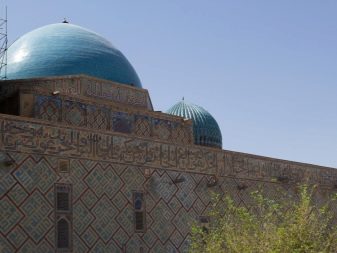
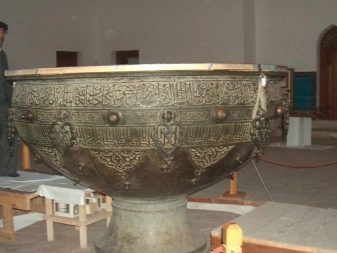
Features of choice
Currently, the main materials for the manufacture of cauldrons are cast iron, aluminum and a multilayer material. A cast iron cauldron provides quick and uniform heating of dishes, and also retains heat inside for a long time. Aluminum capacity is lower in heat transfer properties, so there is not enough time to insist on food in such dishes. A multilayer material implies the presence of several layers of stainless steel and aluminum, which ensures uniform heating and thermal insulation properties. Thanks to this composition, the non-stick properties of the container also increase.
Variants of forms are also diverse: oval, round, elongated, high, understated, with one or two handles. All this depends on the desire of the buyer, so there are no strict rules here. It is important to consider the place where you should cook. Pay attention to the hemispherical shape, which is the standard for cooking on an open fire, but for the gas stove it is necessary to use special supports. If you choose a cauldron for a gas stove, then we recommend a volume of up to 6-8 liters, which corresponds to the pilaf norm for 6 people tentatively.
Larger volumes on standard gas comfort will not warm up. For a small company, it is enough to purchase a capacity of 4–5 liters.

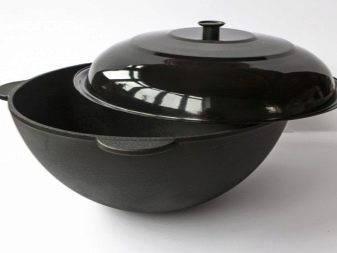

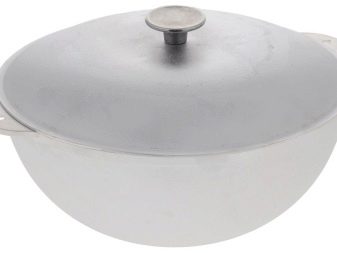
The standard for the choice of material is cast iron, unlike aluminum, it is not so light and mobile, but when choosing a large tank of 8 liters or more, it has no competitors. For a large number of guests, a volume of 15–20 liters is recommended.
Aluminum containers are more suitable for a gas or electric stove for home use. When choosing a cauldron, you must pay attention to the wall thickness. The thicker the better. The inner surface should not have irregularities, depressions or protrusions. And there is also a rule that the larger the volume of the dishes, the thicker its walls should be, because it is their thickness that is the main factor in maintaining heat inside.
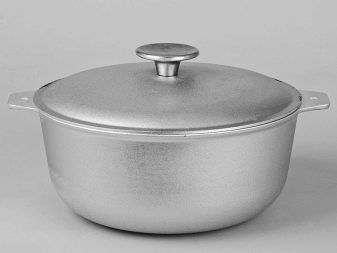
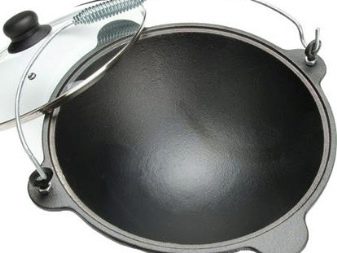
High temperature non-stick containers deteriorate due to frequent peeling of the coating after a period of time. Therefore, many prefer the old, used cauldrons, which simplifies their use. Enameled wall coating also affects the taste, so experienced cooks do not use such dishes. Copper products should be carefully handled, which has difficulties in maintenance.
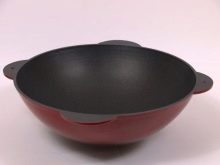
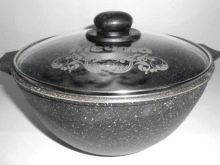
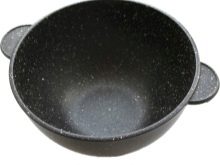
For a ceramic plate, a cast iron product is also the best option. Since cast iron utensils are massive and thick, and the fit to the surface is maximum, this ensures the most efficient operation of such plates.
It is important when choosing to pay attention to the diameter of the bottom, the minimum size should be 12 cm. Choosing a model is with the most even bottom, without bulges.
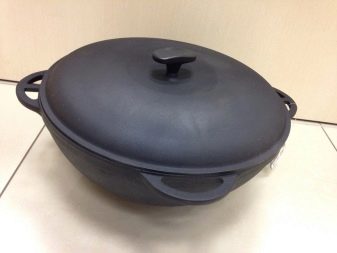
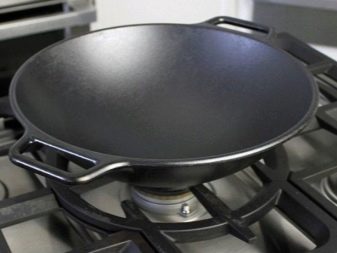
Aluminum utensils must have a ferromagnetic insert, otherwise there is a risk of leaving permanent traces on the surface of the plate.
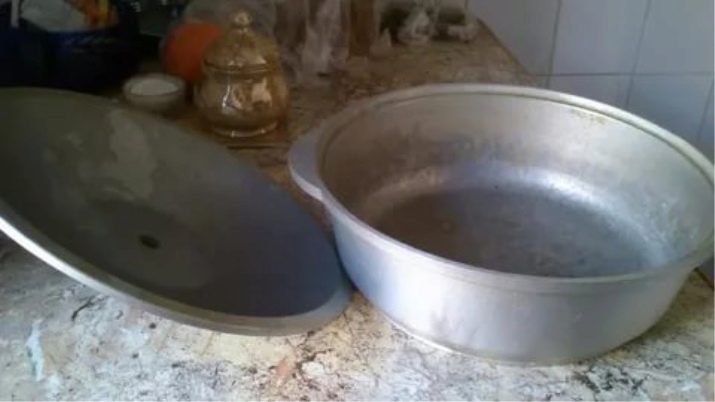
For cooking on a glass ceramic stove, it is necessary to choose not too massive products, since excessive weight of cast iron and ingredients can damage the surface of the stove, as well as inaccurate use of cast iron products.
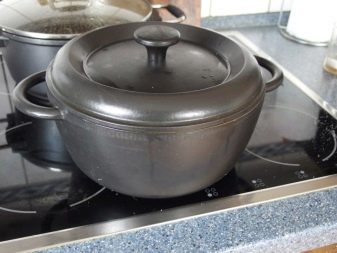
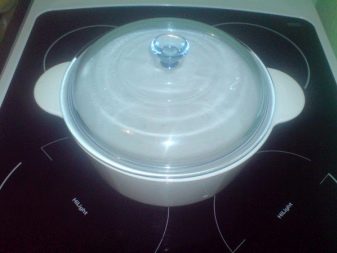
And also today appeared induction cauldrons. They are a separate plate with a built-in cauldron. Such models are safe, economical in energy consumption, they have temperature controllers. However, the disadvantage of this model is its cost. High cost is not available for ordinary consumers.
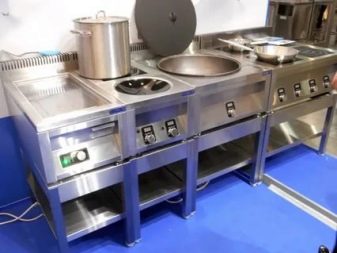
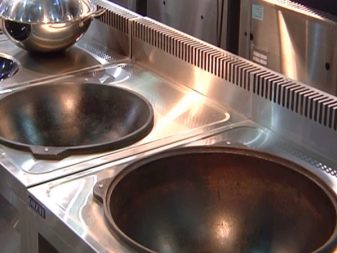
When choosing a cauldron for an electric stove, there are also some nuances.The standard burner of such a stove is an electric spiral inside the hob, so the heat spreads unevenly.
There are models of cauldrons with a spherical inner surface, while the bottom itself is flat. Such models are well suited for the initial frying in the first stages of cooking Central Asian dishes. However, for the extinguishing process it is nevertheless necessary to independently control the uniformity of heat distribution.
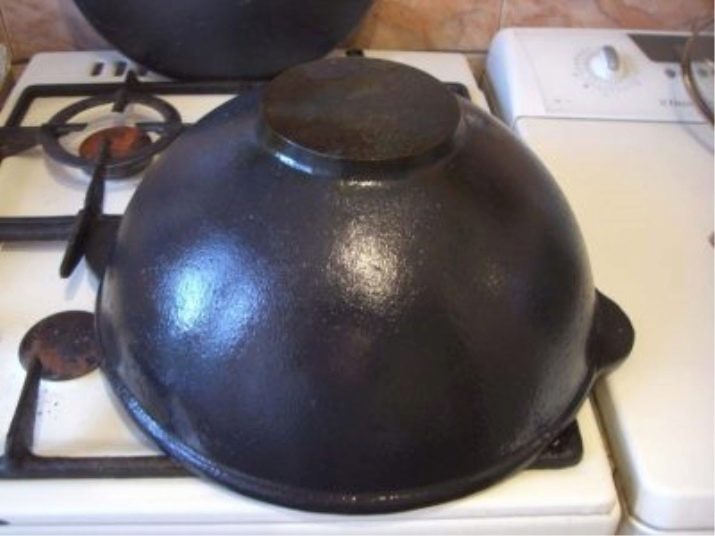
Care
Any dishes need care, it depends on how long, comfortably and fruitfully it will serve you. Care for the cauldron is recommended to start from the very beginning of its acquisition. So, before first use it is necessary to calcine it. On a small fire, evaporate the remaining engine oil used in the casting of the product. Then, before cooking, you can grease the surface with vegetable oil and warm it up strongly, this process will create a film that will protect the ingredients from sticking. When using an aluminum product, a more moderate fire should be used, since it may not withstand the use of high temperature.
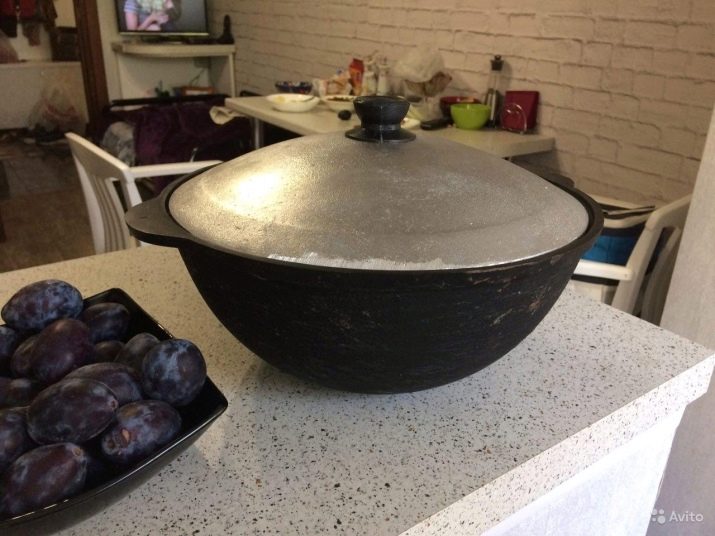
At the end of cooking, the dishes are washed and wiped dry. The appearance of rust stains on a cast iron product will help prevent the process of rubbing dishes with an oil-soaked soft cloth. If something burned out in a cast-iron cauldron, then it should be soaked with water. Then pour 1 kg of salt and calcine thoroughly. Allow the product to cool and remove the salt. After cleaning, a container should be baked with oil, as recommended before first cooking.
With long-term use of a cast iron product, the quality of the cooked food improves. This is explained by the porous structure of cast iron, which is filled with oil during cooking. Thus, a kind of non-stick coating is formed. Stainless steel and aluminum products can be washed in a dishwasher, they tolerate moisture well, and also do not corrode.
So, following these simple recommendations for choosing and caring for a cauldron, you can achieve excellent results in achieving high quality cooking in Central Asia and surprise your guests with their hospitality.

How to choose a cauldron for a stove, see further.
